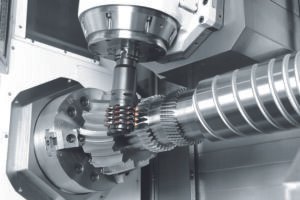Sintered gears are made by pressing metal powder, with the main advantages of low cost, customizable shape and size, and simple and fast production. Machined gears are mainly produced through the mechanical processing process, with high accuracy and strength.
Gears are key components of various machines, and sintered gears and machined gears are two different manufacturing methods of gears. In terms of gear production, both have their unique advantages and disadvantages. The differences are mainly reflected in manufacturing processes, costs, accuracy, and physical properties.
Manufacturing of sintered gears
Sintered gears are made of metal powder, pressed into shape in a mold, heated, and then cooled. One obvious benefit is that sintered gears can be made into gears with a nearly net shape, which reduces material waste and eliminates the need for additional finishing steps, thereby saving costs.
In addition, the sintering process allows for the large-scale production of gears with complex designs that traditional machining methods cannot achieve. Gears manufactured by sintering can be used to produce products with certain special properties, such as self-lubrication, wear resistance, corrosion resistance, etc. Sintered gears’ production efficiency and cost advantages are obvious in large quantities.
However, the sintering process has some limitations. For example, the mechanical properties of sintered gears, such as tensile strength, are often lower than those of machined gears. In addition, the accuracy of sintered gears may be affected by factors such as powder particle size, pressing pressure, and sintering temperature during powder compaction and sintering processes.
Manufacturing of Machined Gears
Mechanical machining of gears is the process of producing gear shapes from metal billets through physical removal methods such as turning, milling, or grinding. This process provides greater flexibility in design changes and adaptation than sintering, as gears can be individually modified.
The accuracy of machining gears is usually high because machining methods can accurately control the motion trajectory of cutting tools. They can also be made into gears larger than sintered gears, providing greater versatility in terms of design scalability.
However, the machining process may be more time-consuming and may generate more cutting waste, making mechanical machining more advantageous for producing small batches of complex gears.
Conclude
Ultimately, the choice between sintering and machining in gear production depends on the specific requirements of the intended application. Factors such as cost, accuracy, yield, material characteristics, design complexity, and size all play a role in the decision-making process.
Although machined gears often provide excellent strength and scalability, sintered gears provide cost-effective solutions for smaller and more complex designs, making them particularly suitable for mass production. By understanding these differences, you can choose to use the most suitable production method to meet your specific needs.




